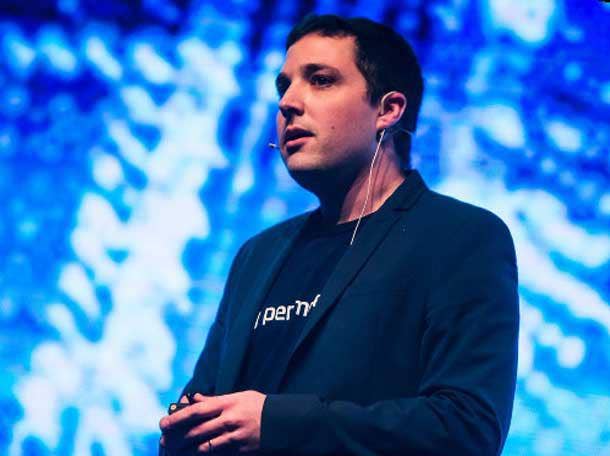Perimeter 81 CEO On The SASE Platform As A ‘Painkiller, Not A Vitamin’ For Partners, End Customers
‘Channel is the [highest] growing segment we have … I think SASE will be a big part in the evolution in how companies consume networking and security and I strongly believe the MSP space will be involved,’ Perimeter 81 CEO and Co-Founder Amit Bareket tells CRN.

Perimeter 81 CEO and Co-Founder Amit Bareket
Perimeter 81, a security and cloud networking provider that entered the secure access service edge (SASE) market about two years ago, is leaning into the channel ecosystem to help customers adjust their approaches to network security in the new era of hybrid work and digital transformation.
Today, the Tel Aviv, Israel-based company is focused on Security Service Edge (SSE) and Zero Trust Network Access (ZTNA) technology to help enterprises and channel partners transform their network security strategies and replace legacy solutions that aren’t plugging all the holes for businesses anymore, such as VPNs and firewalls. The company in January closed a $100 million Series C funding round led by B Capital, bringing Perimeter 81’s total funding to $165 million and raising the value of the company to $1 billion. The additional funding is being used to fuel its growth in the network security market and support its sales, marketing and R&D efforts.
Now that the five-year-old startup has a “mature” SASE offering, it’s ready to prioritize partners, according to Perimeter 81’s CEO and Co-Founder, Amit Bareket. The company has worked to align itself with the channel, and that focus starts at the top with Bareket. Perimeter 81 has about 10 channel partner managers spread across the U.S. and Europe — all of which are “MSP-focused,” he said.
The company today has more than 2,800 customers and 300 partners. The channel, said Bareket, has been a very important piece of the company’s growth. The upstart’s CEO spoke with CRN about differentiation that Perimeter 81 brings to the SASE space and the company’s channel strategy.
What follows are excerpts from the conversation.

Tell us about the mission of Perimeter 81.
Perimeter 81’s mission is to enable businesses to easily build, manage and secure themselves in an era where the open Internet is the new corporate network. So, to be able to enable businesses to build a scalable network when employees are working outside the office, resources are moving to the cloud, and the corporate network as we know it is no longer relevant. Network security was very dependent on the site, so now there’s a box protecting an empty office. COVID only accelerated [that].
The Internet [and] the fact that 5G and fiber is developing is also helping because you’re not necessarily investing in infrastructure, you can do that over the internet. That is a very strong headwind that pushes us forward. As a company, we’re very much focused [on building] a great product that is easy to use [and] easy to manage that provides enterprise-grade security, all delivered from a single management platform [and] a single network.
How important has the channel been to Perimeter 81’s growth?
We started initially going directly to businesses of all different sizes in order to build a mature solution. About three years ago, once we’ve got to a reach of over 1,000 customers — today, we’re closer to 3,000 customers — we identified that not only are companies changing the way they protect themselves, but they also changing the way they manage [the network]. So, instead of having a dedicated team internally that perhaps knows a very specific technology stack — knows how to manage Palo Alto firewalls — there is a strong trend of adopting MSPs not for only IT management, but also for security. And we started to [realize] we had a great fit right [with] the way companies are securing themselves. The fact that we’ve built an easy-to-use platform that is enterprise-grade; we’re a painkiller. We’re not a vitamin, because there are two main pains that we address, one is remote access with our ZTNA and one is with our (secure web gateway) SWG offering. The combination is big for the MSP space. When we discovered that, we decided to strategically go and build our partner program to enable MSPs to serve customers. We’ve built a team to support the MSPs both technically and [through] marketing enablement and it’s become very successful. What always drove me and the team at Perimeter 81 is to drive value to our customers. While working with MSPs, we created a triangle of win-win-win where we solve the customer’s pain. The MSP has a satisfied customer and can really be able to lead the way as a change sherpa through their [customers’] journey.

Tell us about your channel strategy today.
Channel is the [highest] growing segment we have. We started directly, though, in order to build out the maturity. We didn’t want to go to the MSP space without product maturity because, what we discovered was that the channel really values robustness. No one wants to work with a solution that has reached a maturity point. Then, we went to the channel and now we are very focused on channel. But because the history, we have about 80 percent of our business today is direct.
[We’d like to rely on the channel] as much as we can. We have a very focused strategy in the U.S. We prefer to have a customer work with an MSP [rather] than directly. Our preference is to involve the MSP because it helps us with implementation and services for the customer, so in many cases, we attach existing customers to MSPs.
How does Perimeter 81 differentiate itself in the increasingly crowded SASE space?
The way that we differentiate ourselves is in our time to value. If you ask our customers or partners why they like us they will tell you [it’s] the ability to operate and deploy the platform quickly. We have more success with the midsized companies, from 5-5,000 employees. This is where we focus most of our attention. I would say it’s very synergetic to some of our competitors in the larger enterprise while we focus on the market segment that I believe is leading the way in IT. With 5G and fiber available anywhere, and the internet being fast, I believe that the corporate network will become simpler and simpler. Everyone will move on to the internet [because] the internet is here to stay. The simplification will also contribute to the trend where the midmarket MSP is the face of the future for IT and the channel.
We integrate with existing solutions — we’re not rip and replace, but rather integrate and migrate. No matter where you open your computer, you have the same security experience. [For] an MSP, that is very powerful because they can go and standardize the way they’re securing their customers. ‘I can give [customers] a secured network in a unified way. And I’m able to consolidate many of my tools down to a few. I think that consolidation is important. The increase in the amount of tools create complexity that reduces security. I call it the cybersecurity complexity gap. More tools, but less secure.
How have you scaled your channel team internally to support more partners?
We’ve scaled the [channel] team a lot. First of all, I’m very involved in the day-to-day in the channel and with the community, conferences, etc. All the company is aligned — from marketing to product; we dedicated a team that’s only working on features for the channel. It’s a complete organization alignment to support the channel. And this is not necessarily an easy task to achieve, but I can tell you that we’re very much focused. And it starts from the bottom, but also, on my part [at the top].
One of the beautiful things about the platform is it’s very easy to understand. There is a big value for managed services on top of our platform, like monitoring, configuring and deploying, but the day-to-day is relatively straightforward. We have a certification program, we have a dedicated technical resource, we have a dedicated business resource, so we have a plan where any [MSP] can start with us, we will train and enable them and more importantly, we will support them to make them successful. I think SASE will be a big part in the evolution in how companies consume networking and security and I strongly believe the MSP space will be involved.